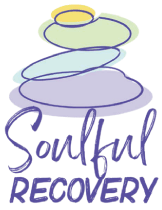The Critical Transition Period
Completing addiction treatment is a tremendous achievement—one that takes courage, commitment, and hard work. But as anyone in recovery knows, leaving treatment is not the finish line; it’s the beginning of a new chapter. The transition back to everyday life presents both exciting opportunities and significant challenges. Building a sustainable recovery routine is essential to maintaining the progress you’ve made and preventing relapse.
Research indicates that most relapses occur within the first six months after treatment, making this period particularly vulnerable. The structured environment of treatment—with scheduled therapy sessions, group meetings, and support staff—suddenly gives way to the demands and triggers of daily life. Without proper preparation and ongoing support, this transition can feel overwhelming.
This is precisely why setting yourself up for success through comprehensive discharge planning is so crucial. A sustainable recovery routine doesn’t happen by accident; it requires intentional design, consistent implementation, and ongoing adjustment as you learn what works best for you.
Creating Structure in Your Daily Life
One of the most powerful tools in early recovery is structure. During active addiction, chaos often reigns—unpredictable schedules, neglected responsibilities, and erratic sleep patterns. Recovery offers the opportunity to rebuild order and stability in your life.
According to the Substance Abuse and Mental Health Services Administration (SAMHSA), recovery support services that include structured daily routines significantly improve long-term outcomes. A sustainable routine should include:
Morning Rituals: Start each day with consistency. Whether it’s meditation, exercise, journaling, or simply making your bed, morning routines signal to your brain that you’re committed to positive change. Practicing gratitude can be a particularly powerful way to begin your day with the right mindset.
Regular Sleep Schedule: Addiction often disrupts natural sleep patterns, and poor sleep undermines emotional regulation, decision-making, and stress management. Establishing consistent sleep and wake times—even on weekends—helps reset your body’s internal clock and supports both physical and mental health.
Scheduled Activities: Fill your day with purposeful activities that leave little room for boredom or negative thinking. This might include work, volunteer opportunities, hobbies, exercise, therapy appointments, and support group meetings. The key is creating enough structure that you’re not left with long stretches of unscheduled time, especially in early recovery.
Prioritizing Physical and Mental Wellness
Your body and mind need time to heal from the effects of substance use. A sustainable recovery routine must prioritize wellness in multiple dimensions.
Physical Health: Regular exercise releases natural endorphins, reduces stress, improves mood, and provides a healthy outlet for managing difficult emotions. Whether it’s walking, yoga, swimming, or team sports, find activities you genuinely enjoy so your fitness routine feels sustainable rather than like another obligation.
Nutrition also plays a vital role. Substance use often leads to poor dietary habits and nutritional deficiencies. Eating balanced meals at regular times supports brain chemistry, energy levels, and overall wellbeing. Consider meal planning and preparation as part of your weekly routine.
Mental Health Care: Recovery isn’t just about abstaining from substances—it’s about addressing the underlying issues that contributed to addiction in the first place. Continuing mental health support through individual therapy, support groups, or ongoing outpatient treatment helps you develop healthy coping mechanisms and process difficult emotions without turning to substances.
Building psychological resilience takes time and practice, but it’s one of the most valuable investments you can make in your long-term recovery.
Maintaining Connection and Support
Isolation is one of recovery’s greatest threats. The National Institute on Drug Abuse (NIDA) emphasizes that ongoing support and community connection are essential components of sustained recovery.
Your routine should include regular connection with others who understand your journey. This might mean:
- Attending 12-step meetings, SMART Recovery, or other support groups
- Staying connected with people you met in treatment
- Working with a sponsor or mentor
- Participating in peer recovery coaching
- Scheduling regular check-ins with a therapist or counselor
Consider whether transitional housing like a sober living environment might provide the community support and accountability you need during early recovery.
Building Your Relapse Prevention Strategy
A sustainable routine must include concrete strategies for managing triggers, cravings, and high-risk situations. Your relapse prevention plan should be a living document that you review and update regularly.
Key components include:
- Identifying your personal triggers and developing specific coping strategies for each
- Creating a list of people you can call when you’re struggling
- Establishing healthy responses to stress, boredom, anger, and other difficult emotions
- Recognizing early warning signs that you’re moving toward relapse
- Having a clear plan for what to do if you experience a slip or setback
Remember that relapse doesn’t mean failure—it’s a signal that your treatment plan needs adjustment. What matters is how quickly you reach out for help and recommit to your recovery.
Finding Purpose and Meaning
Beyond the logistics of daily routines, sustainable recovery requires finding purpose and meaning in your substance-free life. This is where recovery transforms from simply “not using” to building a life you genuinely love and want to protect.
What brings you joy? What are your values? What goals do you want to pursue? Whether it’s reconnecting with old hobbies, developing new skills, rebuilding relationships, advancing your career, or contributing to your community, having positive goals provides motivation and direction.
Your Recovery, Your Routine
There’s no one-size-fits-all approach to recovery routines. What works for one person may not work for another. The key is experimentation, self-awareness, and willingness to adjust as you learn more about yourself and your needs.
Be patient with yourself during this transition. Building new habits takes time—research suggests it can take anywhere from two to eight months for new behaviors to become automatic. Some days will feel easier than others, and that’s completely normal.
Life after treatment is an opportunity to create the life you’ve always wanted—one built on authenticity, health, connection, and purpose. With a sustainable routine that supports your wellbeing, ongoing support from others, and commitment to your recovery, you have everything you need to thrive in your new life.

